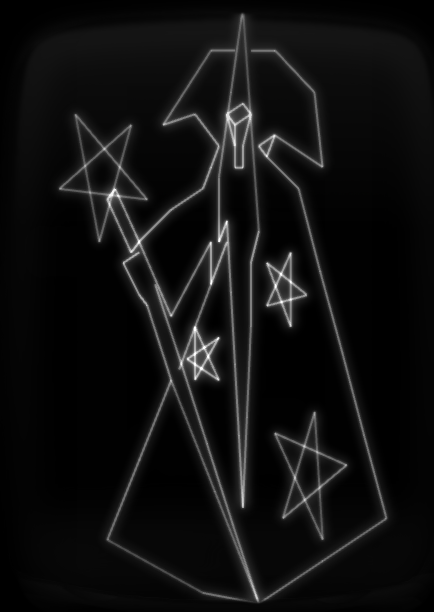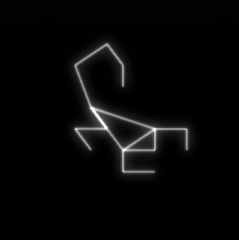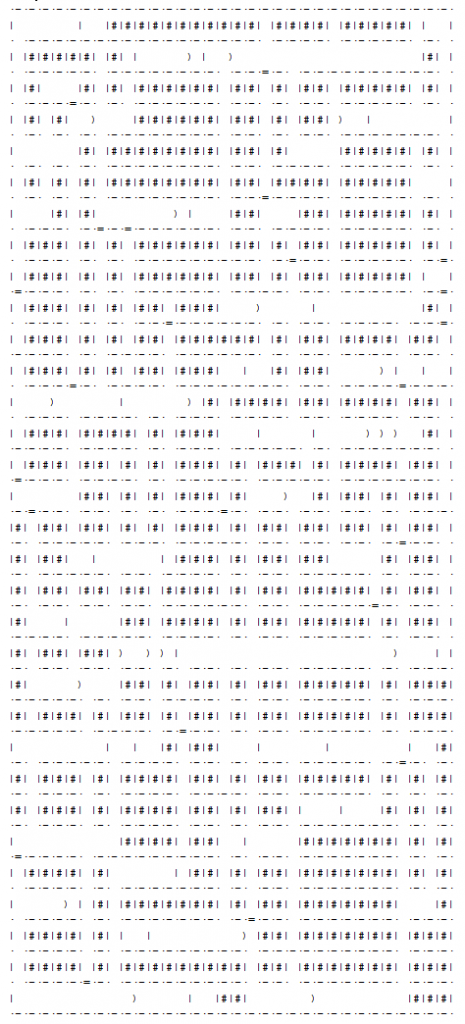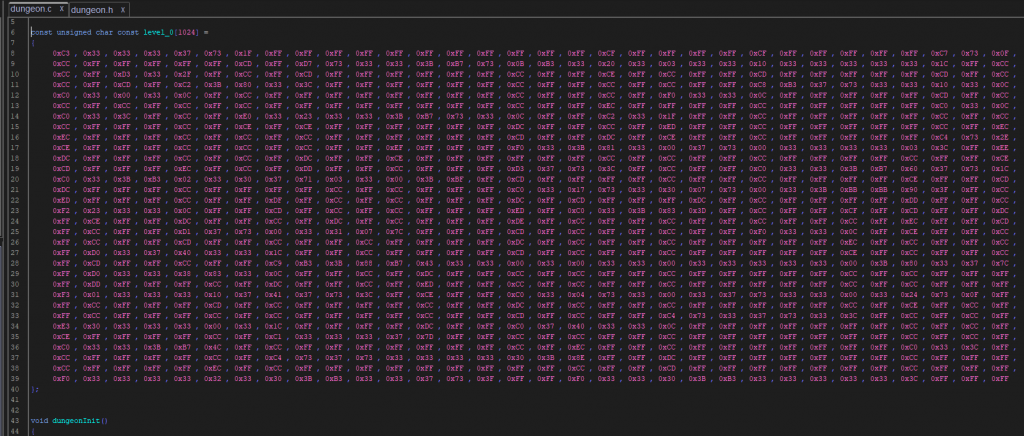I can’t concentrate well today – so I will call it quits “early”.
Things done today:
- adopted code from “player.*”
- adopted code from “dod.*”
- adopted code from “dodgame.*”
- adopted partial code from “osLink.*”
- adopted partial code from “dungeon.*”
- I compiled (and got it to run) for reference purposes a linux version of dod
- built two “utility” programs to extract data from the original source
- I extracted most “sprites” from those “string-streams”
- the dungeon levels are built in RAM location by the original game, since one level is 1024 bytes large, this is not possible with the vectrex.
There are two ways to handle this:
a) built only the portion that is needed NOW
b) built the level data in advance and use it from ROM - for now I chose to do “b)” and built level data in ROM.
But this probably means I will not have a random dungeon feature
I will see how this goes, if everything else works, I might go back to the idea of “ad hoc” dungeon generation
Some images:






Are those dungeon levels, that are build in RAM, ascii arrays as depicted in the text output that you generated above? If so, is the full range of byte values used for the single locations of the map? Or is it maybe possible to condense this information to 4 bit nibbles (compress two original bytes in one byte Vectrex RAM)?
I am not 100% sure yet, because I have not really looked at the “Viewer” class.
But I think in one byte there are 4 information encoded, each uses 2bit.
left/middle/right – I don’t know what the 4th is yet.
Vertical information is done in another array – there obviously is some redundancy… but as said… I am not enough into the code yet to be sure.
One step at a time :-).
If you were using Forth, you could very easily tweak the compiler such that the “level 1 dungeon generated as text output” could actually be the source code definition of the L1 dungeon. It would make creation of new dungeons very easy. I’m doing something quite similar on my current game for selectable “worlds”, albeit with far fewer locations!
Yea, I have implemented the generator in Java – also makes it very easy ;-)!